A guide to the Screen Of Green (ScrOG) technique
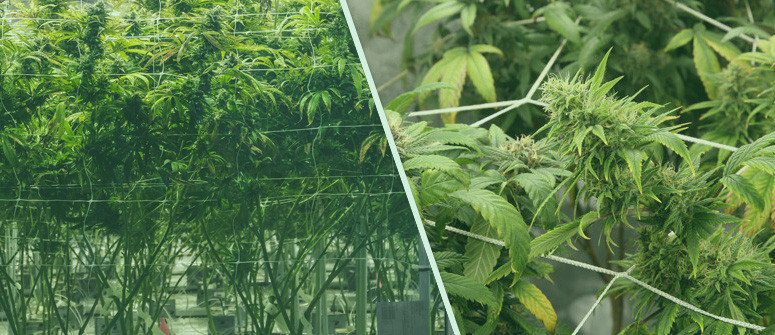
Few training techniques get as much attention as the ScrOG method (Screen of Green). In this article, we take an in-depth look at the basics of ScrOG, teach you how to start your own ScrOG setup, and help you advance the technique by combining it with LST, Mainlining, Super Cropping, and more.
Contents:
There are regular cannabis gardens, and then there are ScrOG gardens. Screen of Green, or ScrOG among growers, is an infamous growing technique that involves growing one or several cannabis plants under and around a screen to create a uniform canopy that maximizes light penetration to all bud sites.
Read on for an introduction to ScrOG and instructions on how to set up and master your first Screen of Green cannabis garden.
What Is Screen Of Green (ScrOG)?
Cannabis plants naturally grow tall rather than wide. If you've ever left a plant to its own devices, you'll likely have seen it take on a Christmas tree shape. Screen of Green, or ScrOG for short, is one of many training techniques designed to tackle cannabis' natural apical dominance. It uses a screen as a trellis to control and guide the growth of several cannabis plants.
ScrOG is designed to raise lower branches and lower top branches, creating an even canopy that allows for better light distribution to all bud sites. During the vegetative stage, ScrOG helps control foliage growth to make the best use of the limited space in your grow room or outdoor garden. Then, during the flowering phase, ScrOG promotes even light distribution to all bud sites, which equals bigger buds and heavier harvests.
When To Use Screen Of Green: The Advantages of SCROG
ScrOG holds some very clear advantages over other growing techniques. You might find the Screen of Green method particularly useful if:
- If you're growing in small spaces. If you're growing in a small tent or room, the last thing you want is tall, towering plants, as only the buds closest to your grow light will be able to develop fully. Using ScrOG in a small space can help drastically even out your canopy to ensure the light from your grow lamp gets evenly distributed to all bud sites.
- If you've dealt with light issues or mould in previous grows. Arguably the most common light issue growers face is poor light penetration of the canopy. As we described above, this often happens in smaller grow rooms or tents, but can take place any time plants aren't trained properly and start to grow too tall or on top of each other. Mould issues are similar and tend to strike in cramped grow rooms where plants are touching and warm, humid air can't readily move around the room. If you've run into these kinds of problems in previous grows, ScrOG might help you overcome them.
- If you're looking for bigger yields. Cannabis plants grow fine on their own, but if you're looking to seriously improve the size and quality of your yields, you'll need to give your plants a little nudge in the right direction. When implemented properly, ScrOG can greatly improve your harvests and yields.
How To Use Screen Of Green
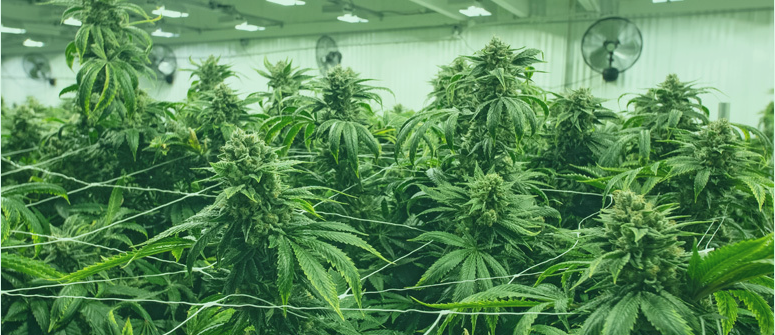
Now that you understand the benefits of ScrOG, it's time to put this technique into action. Below you'll find a detailed walkthrough of the Screen of Green technique, complete with the list of materials and instructions you need to start Scrogging at home.
What You'll Need
- Your choice of cannabis plants, either grown from seed or clones
- Pots. We recommend using 11-litre pots as a minimum, but feel free to use bigger pots if your grow space allows for it.
- A latticework screen with roughly 5–10cm spacing between each lattice. You can buy these screens ready-made from garden centres and grow stores or opt to make your own using bamboo stalks.
- Garden ties or string.
Method
- Constructing/buying your screen. Many growers opt to make their own screen, which is fairly simple. The materials and method for constructing your screen will obviously vary depending on the size of your grow room/tent, but as long as you stick to 5–10cm lattices, you should be fine. Also, we recommend keeping the screen roughly 20–40cm above the rims of your pots (20cm is usually a good height for smaller, stockier strains, while 40cm is best for stretchy, fast-growing varieties).
- Prepare your plants. Your plants should have started vegging before you bring them into a ScrOG setup. Also, once your plants have developed at least 5 nodes, make sure you top them at the highest node with a sterilized pair of scissors or a razor blade. Topping forces plants to diverge their growth into multiple nodes and encourages lateral growth, which is exactly what we want when Scrogging.
- Weaving. As your plants grow, you'll want to manually weave them around the screen you've built to begin creating an even canopy. Note that cannabis doesn't naturally act like a vine, so you'll need to coax your plants in order to make them adapt to the screen and grow around it. As you weave a branch under the screen, use gardening ties or sting to gently but securely hold it in place. Do not bend anything so it breaks; the idea is to slowly and naturally train the branches to follow the lattice.
- Pruning. As your plants continue to grow around the screen, make sure to prune away any branches or foliage growing beneath the screen. Remember, the idea with Scrogging is to concentrate a plant's energy only on its canopy, where it will deliver the highest quality buds. Any branches or leaves growing under the screen will get overshadowed by the upper canopy sooner or later, and can therefore be removed completely.
- Monitoring and maintenance. Remember that ScrOG is a training technique that exerts significant stress on your plants. Hence, try to keep your weaving sessions to a minimum (once a week if possible), and water your plants directly after each session. From there, water only when the top of your soil dries out (normally to a knuckle depth), and remember to use a solid base of nutrients to feed your plants and fuel their growth. Besides this, it's advisable to check in on your ScrOG every day to ensure your plants are healthy and happy, especially when they're first introduced to this new setup.
Scrogging Tips
.jpg)
As you can see, the basics of ScrOG are pretty straightforward, and sticking to the basic method we outlined above is a great way to start experimenting with this unique technique. But to really take your ScrOG setup to the next level, follow these tips.
Choose The Right Genetics
Cannabis genetics vary greatly, and finding a strain that perfectly suits your preferences and skills as a grower can take some time. For ScrOG, you'll ideally want strains with moderate flowering stretch to fill out your screen and maximize light distribution across the canopy. Such selection will help produce good yields, especially if you plan to grow a single plant at a time. Consider looking into a sativa strain with a moderate average height and stretch if that's the case. Keep the plant growing in a relatively large pot (given you have the space for it, of course), and keep your screen roughly 40cm above your pot to accommodate the plant's height.
On the other hand, if you're looking to grow multiple plants at a time or you're working with a small grow space, consider picking more indica strains with slightly less stretch and a lower average height. Note that you may not need to weave these plants as regularly as Sativas due to their shorter internodal spacing, and you may also want to adjust the height of your screen to match the shorter stature of these plants. When growing multiple indica-dominant plants in ScrOG, make sure to use smaller pots to be able to space your plants properly (more info below).
The Best Strains For ScrOG
- White Berry. A 75% indica-dominant strain, White Berry packs a lot of punch. It's capable of producing big, frosty, and heavy buds, all while growing to very manageable heights. If you love strains that deliver strong sedative effects and need to maximize space with a small ScrOG setup, this strain might be a great option. White Berry flowers in just 7 weeks and, under the hands of a good grower, can deliver very respectable indoor harvests.
- Green Gelato. This strain combines the classic Californian genetics from Girl Scout Cookies and Sunset Sherbet. The result is a balanced hybrid that grows to medium heights of around 120cm and, with a bit of regular topping and trimming, responds really well to ScrOG (especially low-hanging screens setup in small tents or rooms). Thanks to its short, stocky structure, you can grow multiple Green Gelato plants in 12–15l pots in a room to really make the most of limited space and maximize your yields.
- Bruce Banner 3. The result of crossing OG Kush with Strawberry Diesel, Bruce Banner is a fast-growing, slightly sativa-dominant hybrid. It produces THC levels of up to 27% and grows to about 150cm indoors, meaning it can easily be taught to take up an entire screen in a small indoor tent or room. Keep in mind that this strain also stretches considerably before flowering, so be sure to be accomodating for its long, lanky branches.
Choose The Right Pots
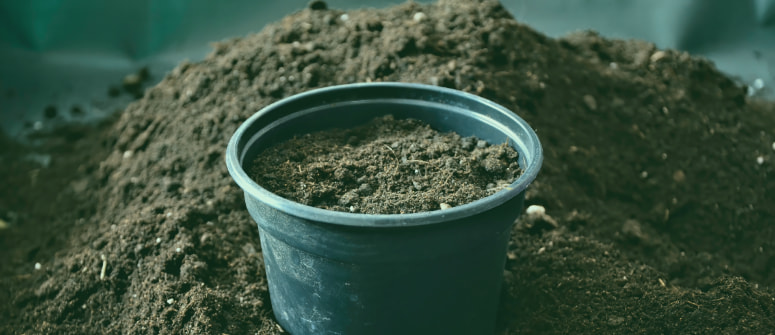
Picking the right size and type of pots for ScrOG is crucial, but may vary depending on the size of your growing area, the number of plants you're growing, and the strains you're working with.
Fabric pots have become increasingly popular among cannabis growers and tend to hold a lot of benefits over traditional plastic or ceramic pots because they allow more air to reach a plant's root area. This delivers more oxygen to the roots, making it easier for the roots to respire. Also, when a plant's roots reach the edge of an air/fabric pot where oxygen levels are highest, they automatically prune themselves, removing any worry about them becoming rootbound. Due to these benefits, fabric pots are by far one of the best options for cannabis growers.
Choosing the right size of pot for your ScrOG setup will depend on how you plan to grow, which will further depend on your grow space and the strains you're growing. If you're working with a stretchy sativa strain and a 1 × 1m tent, you may want to grow a single plant in a 25–30l pot. With this much soil, a sativa strain will grow into a nice size and make maximum use of the screen you've set up. Also, growing a single plant in a big plot will also make it easier to provide solid airflow beneath the canopy to avoid any issues with pests or pathogens. For a more detailed overview of fabric pots, click here.
Alternatively, if you're growing smaller indica strains in a slightly larger tent, you may want to opt to grow several plants in 11–15l pots. Since indica-dominant strains tend to stretch less and grow shorter than sativas, you may find that a single plant won't be enough to maximize the use of your screen. Growing multiple plants placed strategically in different points around your room/tent, however, should allow you to fill out your screen. When growing multiple smaller plants in ScrOG, consider leaving roughly 20–40cm between your pots (depending of course on the size and growth traits of the individual plants).
Provide Good Airflow
Airflow and ventilation are always important when growing cannabis. However, they become crucial when growing with ScrOG. As your canopy develops across your screen, the risk for humidity to build both beneath the screen and inside it increases. As humidity rises, fresh air in your grow room decreases, which can create a breeding ground for pests and pathogens that'll not only damage your plants but may destroy your entire harvest if not controlled properly. Read our overview of the importance of fresh air for cannabis plants for more info.
To help maximize airflow in a ScrOG setup, it's best to use a solid ventilation system comprising of at least one inline fan to draw clean, fresh air into your tent or room, as well as strategically placed oscillator fans to help keep moving around the base of your plants and canopy. Cheap wall or floor fans will definitely do the trick; just make sure to keep them a good distance from your plants to avoid wind stress. If you want to be extra meticulous, you might want to invest in an extractor fan as well, to help pull old air out of your grow space, although this might not be necessary if you're growing in a small room and are already using inline and oscillator fans.
Feed and Water Your Plants Properly
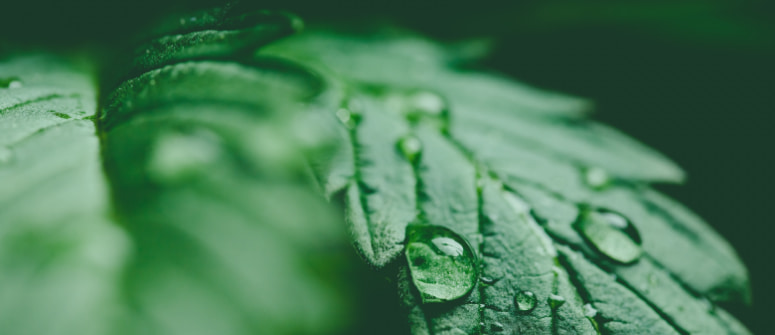
Nutrients and water are essential for the healthy growth of cannabis plants, and that's true whether you're growing a few plants on a balcony or terrace or using a more sophisticated system such as ScrOG.
When it comes to watering in ScrOG, it is generally recommended to water your plants after each weaving session to help reduce stress. Besides this, follow a standard watering routine where you only water your plants when their top soil is completely dry.
When it comes to feeding your plants, we recommend (as always) taking a holistic, sustainable approach wherever possible. Using organic nutrients, for example, is a simple way to help reduce the chemical runoff from your grow, eliminates issues regarding overfeeding or nutrient lockout, and produces a cleaner, more natural final product.
There are countless organic cannabis nutrients on the market, so make sure to shop around and do your homework to find one that suits you (Fox Farm and General Organics are some popular options). Alternatively, you can also use homemade compost and compost teas to turn waste from your kitchen and garden into a rich, organic feed for all of your plants (not only cannabis). Creating your own super soil, furthermore, can even eliminate the need to feed your plants altogether by providing them with a rich substrate that'll last the entire growth right from the start.
Avoid Scrogging Too Early
This is extremely important; do not force your plants to ScrOG too early. Since Scrogging requires you to top your plants, you'll want to ensure your plants are strong enough to handle the stress of this fairly extreme technique. Top too early, and you might risk severely stunting the growth of a plant or, worse yet, killing it altogether.
A general rule of thumb is that you shouldn't perform any kind of training on plants with less than 4 or 5 nodes to avoid stunting or killing them. However, use your own judgment and knowledge to assess a plant and whether it is ready to take such a high-stress technique.
Once you've performed your initial top, make sure to give your plants time to recover. Most growers suggest it takes at least two weeks for plants to recover from topping, but again, be your own judge of that, especially if you're growing plants you're already familiar with.
Finally, once your plants have recovered from their first topping, feel free to top them again to encourage more offshoots and lateral growth. While you can theoretically top your plants multiple times during veg, we recommend topping them just once if you're new to Scrogging and two once you've got some experience with this technique.
Combining ScrOG With Other Training Methods
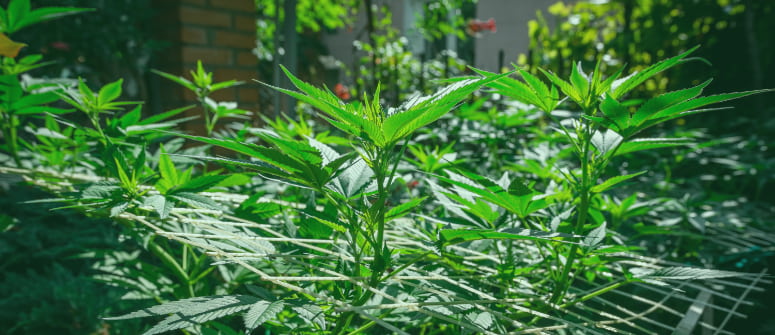
The method and tips described above offer a great entry point into ScrOG. If you've never tried this technique before, stick to those basics for your first 1–2 ScrOG grows to really nail the essentials of this technique.
Then, once you feel more comfortable with this technique, consider coupling it with some of the training techniques described below to really take your ScrOG to the next level.
Lollipopping
The ScrOG method outlined above already covered the importance of pruning the parts of your plants beneath your screen. Lollipopping, in many ways, is similar to pruning, but it's a little more aggressive and involves removing all foliage from the bottom of your plants (including leaves, branches, and even bud sites). As the name suggests, your plants should end up like lollipops—with no foliage at the stem and big, juicy heads (or buds) at the top.
Just like when pruning, make sure to use sterile scissors or razor blades to cut off foliage when lollipopping, as the small lesions you create around the stem of your plant can allow bacteria, fungi, and other parasites to enter your plant's organism. Also, make sure to give your plants plenty of time to recover post-lollipopping, as this technique causes significant stress, and check out our guide to lollipopping for more info.
Low-Stress Training (LST)
LST involves gently bending and tying down the branches of a cannabis plant to manipulate its growth and teach it to grow in certain directions or around specific structures (like a screen for example).
In some ways, ScrOG already uses some elements of LST in the constant weaving that it involves. However, you can use more intense forms of LST to really manipulate a plant's growth and maximize the way it grows around your screen. For example, you can use LST to tie down the tip of a plant so that it grows parallel to the ground, which will force its lateral branches to shoot up and create a more even (and hence productive) canopy.
LST can also be used after your first and second top to tie down the primary branches of a plant and encourage it to fill up more space on the screen. This works great, for example, when you want to grow one large plant (like a stretchy sativa) in ScrOG. Check out our dedicated post on LST for more tips on how to use this technique to maximize your yields.
Mainlining
Mainlining is an advanced growing technique that helps maximize a plant's finite resources and deliver them evenly across all its bud sites. It essentially combines LST, topping, and lollipopping, and works wonders when you know how to use it in ScrOG.
Basically, mainlining involves topping a plant several times at the same node. In turn, it'll begin to develop multiple offshoots that will grow at the same rate. Some mainline ScrOG experts will grow a single plant and top it up to 5 times to create 32 symmetrical offshoots, which they can then train to create a perfectly symmetrical canopy that takes up an entire screen.
Besides giving your complete control over how your plants grow, mainlining also helps plants distribute nutrients and water from their soil to their bud sites, putting an end to popcorn buds and instead giving you heavy harvests of frosty colas. We have a detailed rundown of mainlining in our handy mainlining guide.
Super Cropping
Super cropping is a classic form of high-stress training made famous by Kyle Kushman. It involves squeezing and pinching branches to gently damage their inner tissues without damaging their outer herd. This encourages increased nutrient uptake, makes branches more malleable for LST or ScrOG, and increases light penetration into the canopy.
Like topping and mainlining, super cropping is a high-stress training technique. Hence, employ it with care and always remember to give your plants enough time to recover from each cropping session.
ScrOG: From Beginner To Expert
ScrOG is a cannabis growing technique that, when appropriately employed, allows you to make better use of your grow space and grow heavier yields of better bud. While it is a fairly advanced technique that'll take some time to perfect, this guide should serve as a great entry point to help you master the basics of ScrOG and adapt the technique to match your growing style and preferences.
.jpg)


.jpg)
